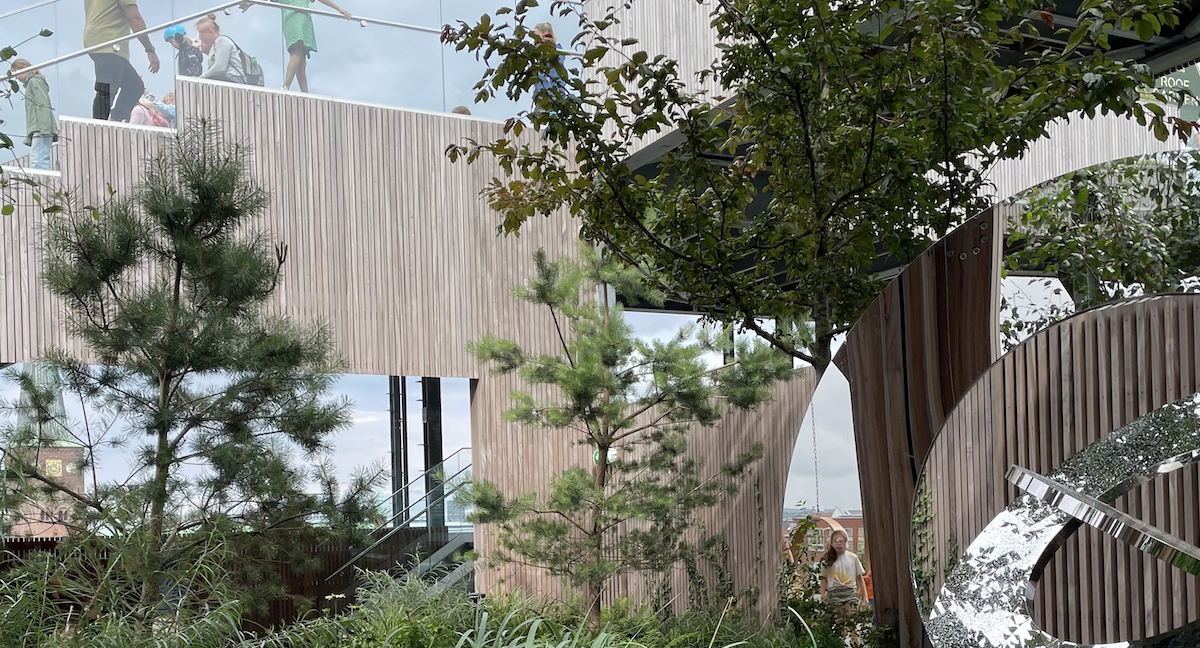Let’s talk about a scary statistic. Around one in six people worldwide—i.e., 17%—say they feel lonely. That’s huge! It’s why the World Health Organization, the U.S. Surgeon General, and Statistics Canada all view loneliness as a global public-health problem we can’t ignore.
Don’t imagine that living in a big city protects you against social disconnection. Loneliness touches people even in places filled with cool cafés, parks, community centres, and public libraries. This raises an important question: why do so many people feel lonely now? It’s something researchers, health specialists, and urban-design experts are still trying to understand.
That’s where design choices come in
Studies show that the way we design our cities and housing projects can either bring us together or keep us apart. What makes the difference are the small, everyday chances we have to meet, talk, play, and connect. Too often, housing projects ignore these opportunities in their designs. And that’s a mistake!
Let’s look at how building for connection works on the multi-unit housing complex. Thoughtful design choices like where we place a bench, whether neighbours have a spot to linger for a few minutes, or feel welcome to join others in a courtyard are opportunities for social connection.
I experienced it firsthand this summer after we bought a condo in the mountains near a ski hill. Naturally, the residents are outdoor people. They meet outside to hike, ride their mountain bikes, and enjoy the fresh air. Later, they often gather for a drink around the pool. Then everyone goes back to their unit. You can feel the sense of community.
How to turn housing into community
When buildings and shared spaces are designed to make it easier for neighbours to bump into each other and linger a little, people have opportunities to interact. It usually starts small: with a smile, a quick chat, a wave on the way out. When those moments keep happening, people start to feel they know each other. Add a few group activities, casual get-togethers, and things to do together, and those encounters can grow into real friendships. That’s how neighbours become friends.
I found some answers in the Building Social Connections Toolkit by Happy Cities and Hey Neighbour Collective. Their goal is simple:
The design principles and actions equip policy makers, planners, designers, and community members to build and advocate for more socially connected, inclusive communities, drawing on over a decade of research and engagement with residents and housing industry actors— including non-profit housing providers, city planners, architects, and market developers.
Fighting loneliness with six design principles
Their research highlights six ideas that make a real difference. The toolkit translates its six design principles into simple actions and showcases them through several projects. In practice, it means to:
• Place shared social spaces in convenient, visible locations where people naturally pass by and cross paths.
• Make those spaces welcoming—design spots where people want to pause, linger, meet others.
• Give shared areas a clear purpose and reasons to use them (things to see or do) so they become part of daily life.
• Design for everyone—from kids to older adults. Don’t forget abilities and backgrounds.
• Create smooth, thoughtful shifts between private spaces (homes) and shared spaces, so people feel comfortable choosing when to interact.
• Allow spaces (and their uses) to adapt over time with the people who live there, so they stay relevant and meaningful.
Pair these design choices with a few community cheerleaders—people who love to organize activities—and you get a recipe for less loneliness and a stronger sense of belonging in your building or neighbourhood.
My hope
Builders and financiers have the power to act on it. While we wait for more of them to act responsibly, let’s take a moment to celebrate those who have been—and continue to be—bold enough to make connection and well-being part of the projects they fund or build.
In the end, connection doesn’t happen by accident. It happens when neighbours can meet, talk, and share life beyond their front doors. That’s why we need to make building for connection a priority. Our well-being depends on it.
——————
This article first appeared in More Than Streets on LinkedIn.
Subscribe on LinkedIn to get my next issue on your inbox.

